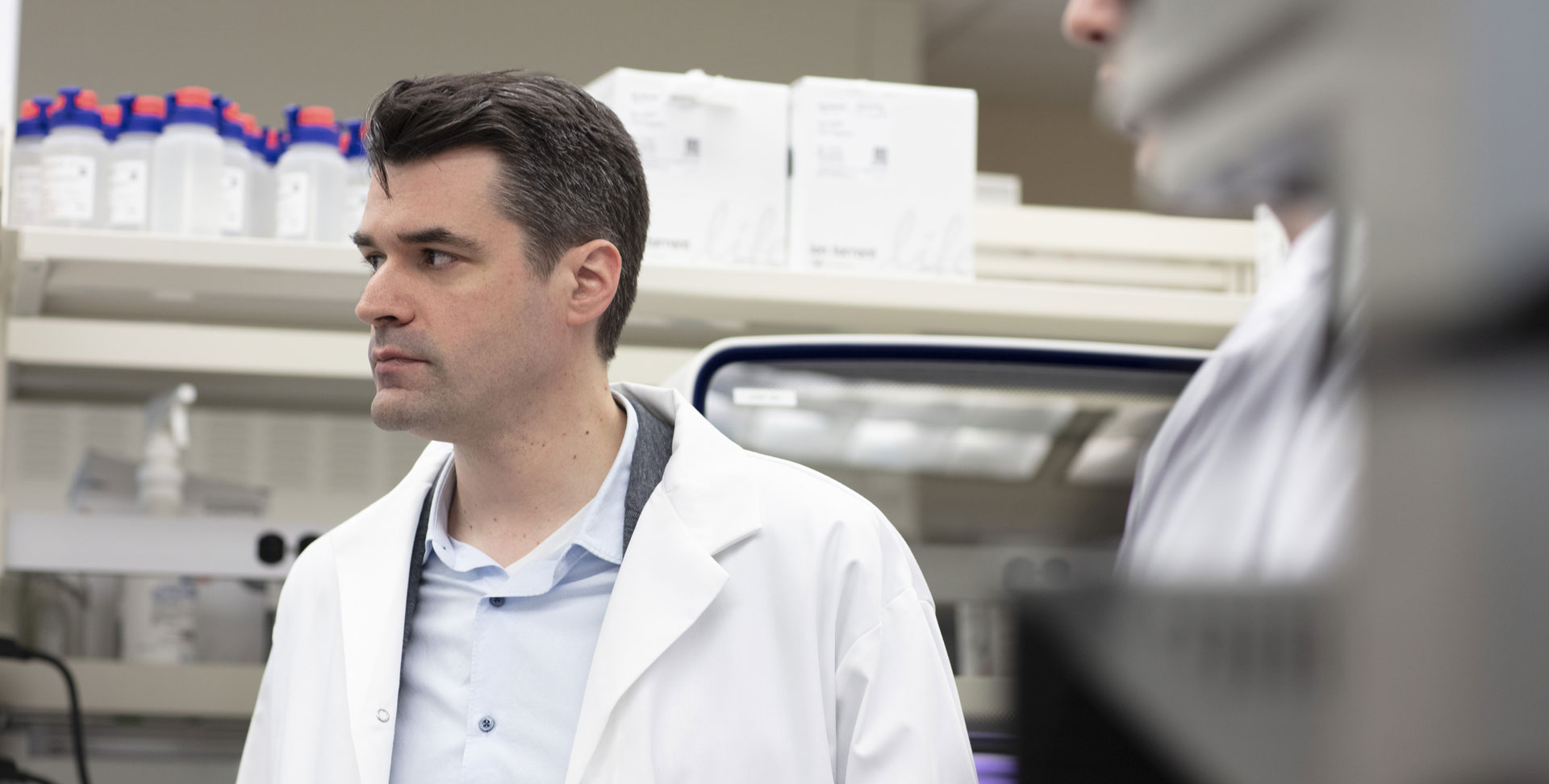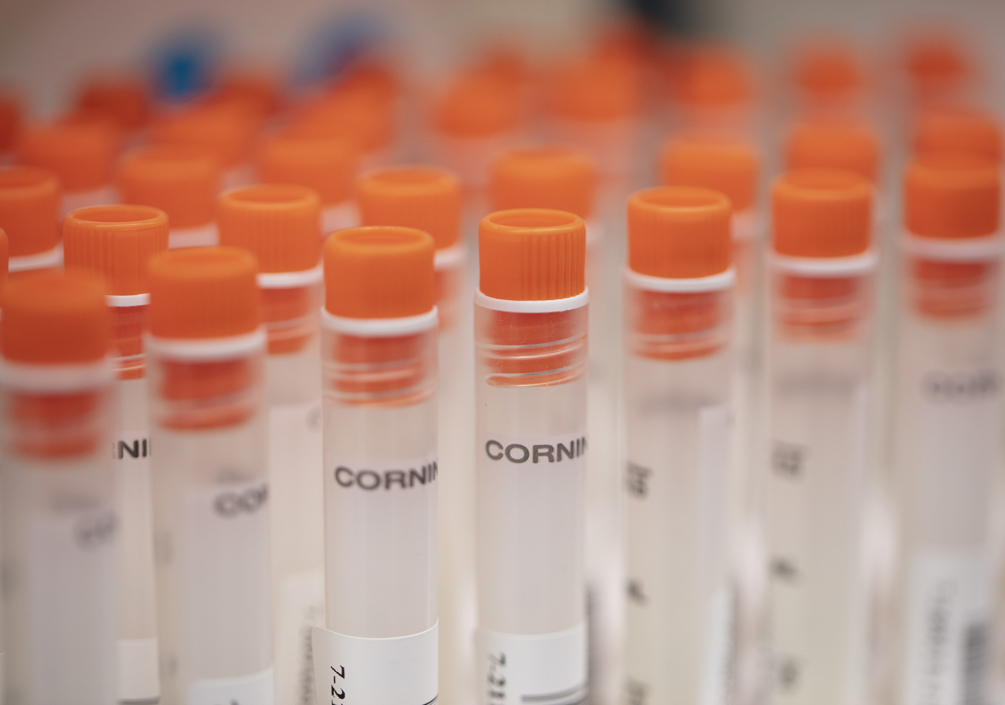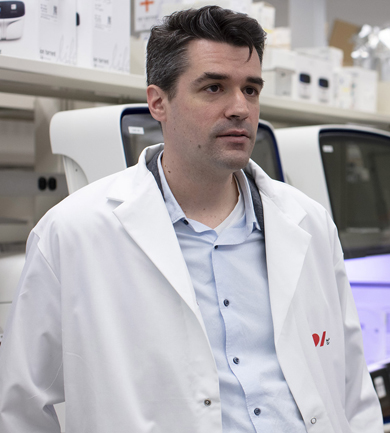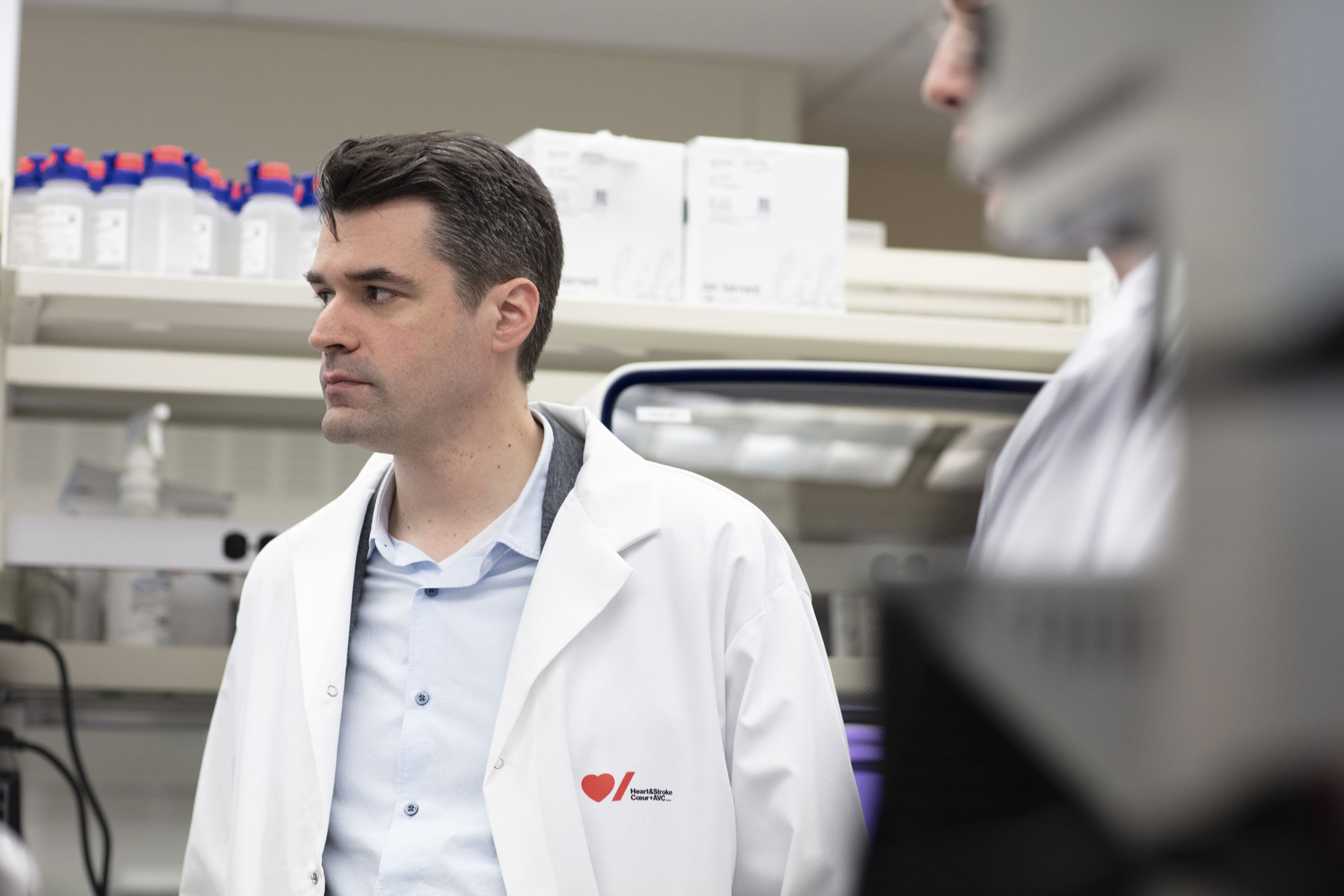
Using genetics to beat heart attacks
Dr. Guillaume Paré’s research could help pinpoint your risk of early heart disease
Chapter 1 Looking harder for why
Dr. Guillaume Paré sees some very challenging cases in his clinic at McMaster University Medical Centre in Hamilton, Ont. “In most cases, there’s no identifiable cause why someone would have, say, a first heart attack in his or her 30s,” he says. “That’s the type of patient we see.”
Fortunately, Dr. Paré loves a challenge.
He mostly sees people with dyslipidemia. That’s an abnormally high level of fats, including cholesterol, in the bloodstream. The condition increases your risk of heart attack or stroke.
If there were a way to identify who’s at risk, it should be possible to help them prevent an event.
“I believe that in such extreme cases there has to be a reason,” says Dr. Paré, a Heart & Stroke funded researcher and professor of pathology and molecular medicine at McMaster. “If we're not finding it, that’s just because we're not looking at the right place.”




Join my fight to prevent early heart disease.
Chapter 2 Genetics holds the key
He believes the place to look is at genetic risk factors. “For most of these patients, there is a striking family history of severe and early cardiovascular disease. That tells us that there has to be something genetic going on.”
His team is the first to propose that this risk is not due to a single mutation, as people used to think, but rather to what is called polygenic risk. “This is the combination of hundreds or thousands of weaker variants,” Dr. Paré says.
So none of these genetic factors alone would cause a heart attack at a young age. But when a lot of them appear together, the risk is significant.
“We've tested this hypothesis and showed that about 20% of our patients with very early risk had this very high polygenic risk. In many cases it was their only risk factor that could be identified,” he says. This research, supported by Heart & Stroke donors, was selected by the American Heart Association as one of the top 10 advances worldwide in cardiovascular research in 2018.
But how do you move from a hypothesis to a tool that doctors can use to help someone prevent a heart attack, stroke or other cardiovascular event?
Chapter 3 Prediction then prevention
Using cutting-edge data analysis, Dr. Paré and his team have discovered thousands of relatively common genetic variants to include in their risk score. His next goal is to find a way to integrate these with rarer genetic mutations that are known to cause disease in the people who carry them.
Eventually he hopes that these risk scores could be used on a large scale. “There are a lot of challenges on how we're going to implement this and how it's going to reach clinical care and clinical guidelines,” says Dr. Paré.
It may take 10 years or more to get there. But he is determined. “It's entirely possible to think of a future where we take a blood draw, and by combining genetic information plus blood biomarkers, we will be able to make very precise prediction of someone's risk of having a heart attack or stroke, or even of developing other diseases such as colon cancer or lung cancer. And hopefully we will be able to act on this.”
Dr. Paré is determined to beat early heart attacks.
And he’s relying on Heart & Stroke donors to continue funding this research.

Timely research by Dr. Paré’s lab helped build understanding about the coronavirus pandemic.
A head start on understanding COVID-19
Dr. Paré’s lab has been studying the role of the ACE2 receptor, a protein found on the surface of cells, mostly in the blood vessels. It plays a big part in the development of high blood pressure, heart disease and stroke.
Dr. Paré was investigating concentrations of ACE2 in the body and how these are influenced by genetic and external factors. Then along came the pandemic. ACE2, it turns out, is the main doorway through which the coronavirus enters cells to cause infection.
He was able to include this important new focus in the research, which is partly funded by Heart & Stroke donors.
“What we have found is quite remarkable,” Dr. Paré says. “There is a direct parallel with factors that would increase the activity of this receptor – such as obesity and diabetes — and the factors that would lead to worse outcomes with COVID-19.”
This connection could help explain why people with existing heart conditions or stroke are more likely to die from COVID-19.

Join my fight to prevent early heart disease.


